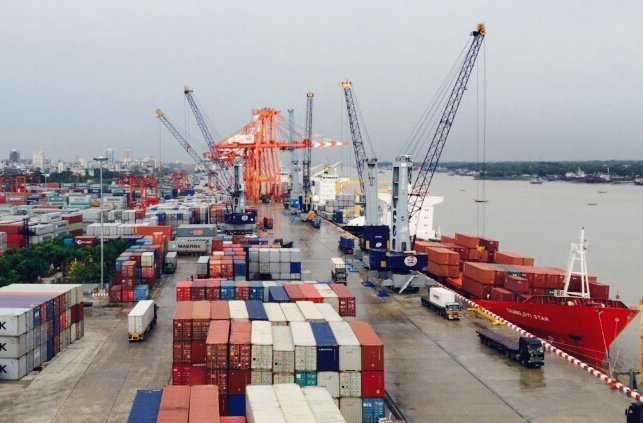Myanmar’s role in progressing One Belt, One Road

Since presenting a special briefing in Yangon regarding the China One Belt, One Road (OBOR) strategy and Myanmar’s role in reshaping the maritime/logistics / transport corridors in the region I have noticed a number of developments in the region to suggest progress is being made. Remember that the policy goals of the OBOR are:
- Policy coordination,
- Facilities connectivity,
- Free trade,
- Financial integration,
- People to people bonds
This sets the policy framework that supports developments, as well as the underpinning of the China’s approach to strategy that is one based on smoke and mirrors i.e. deception to take one’s eye off the real intended objective. This is why I purposely call it a strategy rather than the “softer” OBOR initiative as China frames it.
The political distractions of late, highlighted by the assassination of Ko Ni and civil unrest have tended to place the world’s attention on the political divide within Myanmar. The West had raised, perhaps unrealistic expectations with regard to regime change. The election brought about a lot of hope but this was misplaced due to a lack of understanding of some of the issues facing the country. Since the new government has been in place we see that the level of foreign investment has slowed down as government institutions became bottlenecks and bureaucrats stopped making decisions for fear of a backlash. This was inevitable as the NLD has shown their lack of experience or skills in managing government functions.
The result has been the development of a fairly centrist economy with The Lady being front and centre – all decisions having to pass through her office. In summary, we have a dislocation with decision making and approval processes, compounded with a legal system that needs to adapt to a changed world order.
How has this helped China? In simple terms it has been able to extend its influence through the ‘people to people bonds policy objective’ by assisting with the peace process in the Northern States. Not only does China facilitate these discussions but is active in arranging council meetings. China has already contributed $1m to the peace process with a further $2m due by 2020.
Furthermore when taking a deeper look at the Rakhine State on the Bangladesh / India border, and in particular Kyauk Phyu, note that China has significant vested energy security interests in the region – both in terms of capital spent and people to people interventions. It is well known that China’s interest is in the development of a deepwater port, and Kyauk Phyu seemed a natural choice as it sits beside the gas pipeline into Yunnan province. However, with the UN focus on Rohinga rights, the International Council of Jurists setting unrealistic human rights standards for a poverty stricken population in the region, many have failed to recognise that China’s real intent is to find a west coast port, not necessarily in Kyauk Phyu, but one that circumvents the Malacca Straits.
Taking a look at the other ‘west coast’ i.e. the Thai / Malaysia peninsular, recent and supposedly random, developments include the following:
- January 2017 it has been reported that a new privy council in Thailand been set up by the new King, former premier Tanin appointed president
- Tanin is a staunch supporter and early advocate for the development of the Kra Canal
- A Chinese company has completed a feasibility study as to decide the best route for the Kra Canal.
- Chinese interest in the SEZ and deepwater port in Dawei prior to the recent announcement that Myanmar / Thailand governments agreement to proceed with this SEZ
- Coupled with this is interest in Mawlamyine and Dawei as both are end points for the West-East transport corridor between Vietnam and Myanmar, connecting Quy Nhon and Vung Tau with Dawei and DaNang with Mawlamyine
- Increased infrastructure spend on Vietnam infrastructure whilst focus of the UN on South China Sea, improving relations between the countries and securing vital trade routes
- Increased cooperation between the Thai and Myanmar government and business sectors with 16 bilateral cooperation agreements and MOUs signed to cover mutually beneficial economic development in the areas of infrastructure, IT , banking and manufacturing.
- Formation of the China-Myanmar tourism forum on the earlier this month in the capital, Nay Pyi Taw. This has been facilitated by the China National Tourism Administration, Myanmar Ministry of Hotels, the Chinese Embassy and China’s Yunnan provincial government.
- Myanmar’s recent framework for economic and social reforms emphasises land connectivity, transport links with regional economies, regional economic integration through special economic zones.
To get a feel and framework of these developments raised in this article, one should read them in conjunction with the five policy goals set out in the introduction. This presents both an opportunity and a threat to Myanmar. It would appear that many in government have realised the opportunity that exists, highlighted by the upcoming Myanmar Infrastructure Summit at the end of March 2017. The comprehensive agenda focuses on key connectivity infrastructure projects including rail, ports, air and road. All these projects would be important to the delivery of the China OBOR.
In conclusion, countries such as Singapore would need to be mindful of the changes currently happening to maritime and logistics routes in Southeast Asia as all the current direction points to China successfully delivering on it long term aim of bypassing the Malacca Straits and its 100-year plan to restore ‘Chinese Pride’.
